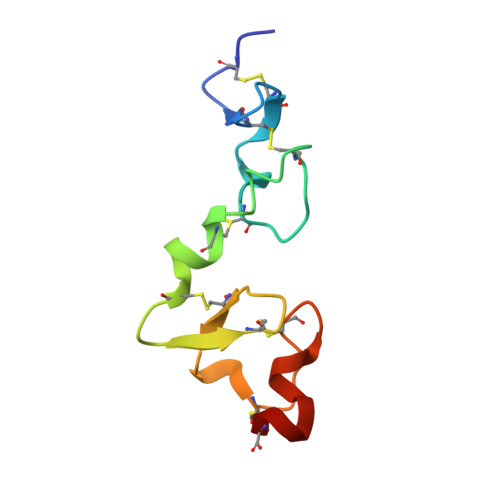Structure of an LDLR-RAP Complex Reveals a General Mode for Ligand Recognition by Lipoprotein Receptors
Fisher, C., Beglova, N., Blacklow, S.C.(2006) Mol Cell 22: 277-283
- PubMed: 16630895
- DOI: https://doi.org/10.1016/j.molcel.2006.02.021
- Primary Citation of Related Structures:
2FCW - PubMed Abstract:
Proteins of the low-density lipoprotein receptor (LDLR) family are remarkable in their ability to bind an extremely diverse range of protein and lipoprotein ligands, yet the basis for ligand recognition is poorly understood. Here, we report the 1.26 A X-ray structure of a complex between a two-module region of the ligand binding domain of the LDLR and the third domain of RAP, an escort protein for LDLR family members. The RAP domain forms a three-helix bundle with two docking sites, one for each LDLR module. The mode of recognition at each site is virtually identical: three conserved, calcium-coordinating acidic residues from each LDLR module encircle a lysine side chain protruding from the second helix of RAP. This metal-dependent mode of electrostatic recognition, together with avidity effects resulting from the use of multiple sites, represents a general binding strategy likely to apply in the binding of other basic ligands to LDLR family proteins.
Organizational Affiliation:
Department of Pathology, Brigham and Women's Hospital, Harvard Medical School, 77 Avenue Louis Pasteur, Boston, Massachusetts 02115, USA.


















